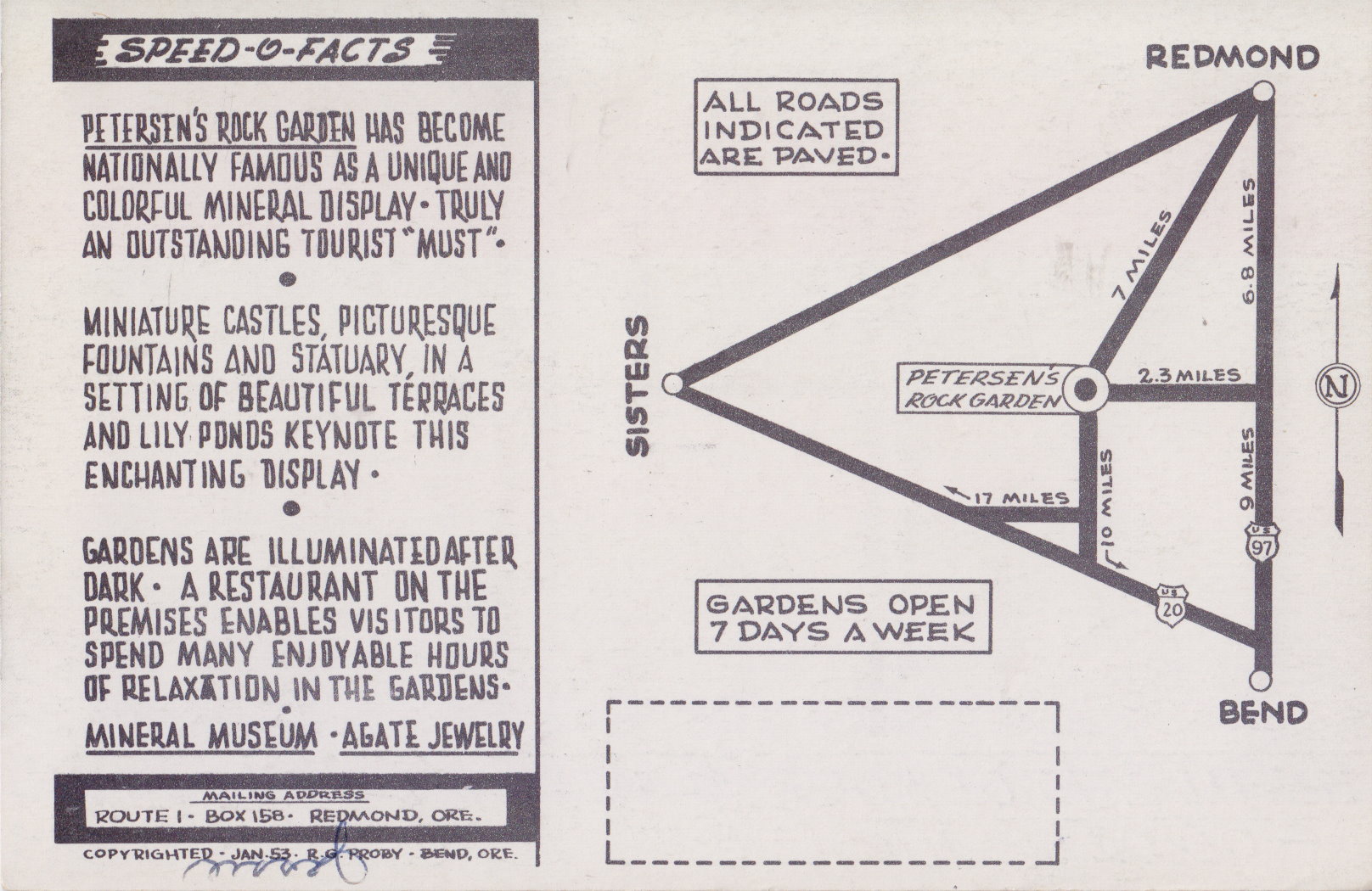
Endangered Places in 2011 for its deteriorating
condition. (Restore Oregon Photo)
Central Oregon’s Petersen Rock Garden was listed in the National Register of Historic Places on October 30 after two years of intensive historic research and documentation. Located between Redmond and Bend in Central Oregon, the quixotic man-made landscape has been the subject of considerable media attention since the property’s listing as one of Oregon’s Most Endangered Places in May 2011.
Petersen Rock Garden was designed and constructed by Danish immigrant and Central Oregon farmer Rasmus Petersen from the mid-1930s until his death in 1952. Petersen constructed the garden features from volcanic and river rock and semi-precious stones that he collected from around the region and the country, which he assembled into sculptures and vignettes that expressed his personal visions and views, such as his Statue of Liberty, as well as fanciful buildings, ponds, and bridges. He also built a museum on the site to showcase the more interesting stones in his collection, including his ensemble of fluorescent minerals. Today the property is about twelve acres in size, with the gardens occupying approximately four acres.
According to State Architectural Historian Dianna Painter, “Petersen Rock Garden is unique in Oregon, and among a small group of properties from around the country that are classified as Folk Art Environments. Probably the most well-known of these properties is Simon Rodia’s Watts Towers in Los Angeles. But Petersen’s garden is firmly placed within the high desert of Central Oregon, with its collection of rocks and semi-precious stones from the region, and its backdrop of the Cascade Range.”
The property was listed as a Most Endangered Place because of its rapidly deteriorating condition and a lack of vision for how the property—which is still privately owned—could be made economically viable. In 2011, Restore Oregon awarded a preservation grant to local consultant Michael Hall to document and research the history of the garden for listing in the National Register, a process completed by the State Historic Preservation Office earlier this year. A 3D laser scan of the property was conducted by Paul Tice in 2012 for physical recordation of the property.

“Understanding Petersen’s inspiration and the enchantment the garden held—and still holds—for visitors was important for me,” says Michael Hall. “It represents a complex intermingling of Rasmus Petersen’s life, his Scandinavian heritage, and his fascination with the Cascade landscape. I am deeply grateful for the many people and organizations that joined in this two-year endeavor to protect one of Oregon’s unique, special places.”
Despite being privately owned, Petersen Rock Garden was—and still is—open to the public at minimal cost. The National Register listing will ensure that the garden is given special consideration by local government, while also paving the way for the restoration work that is still very much needed to sustain this place’s history into the future.
You can read the Petersen Rock Garden National Register Nomination online.

